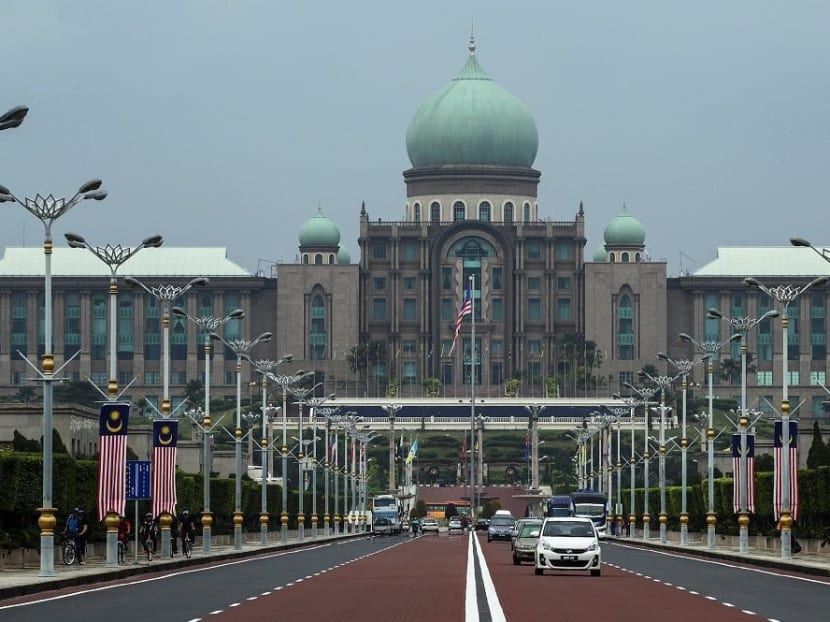ECRL realigned to make Putrajaya transport hub, say sources
PUTRAJAYA — The realignment of the East Coast Rail Link (ECRL) fits into a plan to turn Putrajaya into a transport hub, said sources.

Putrajaya as an administrative centre lacks public transport and the newly aligned ECRL line is to address this weakness, according to sources.
PUTRAJAYA — The realignment of the East Coast Rail Link (ECRL) fits into a plan to turn Putrajaya into a transport hub, said sources.
The resumption of the project under a renegotiated deal with China sees the construction cost reduced to RM44 billion (S$14.43 billion) and the rail link slightly shortened and covering new areas, including the administrative capital.
The ECRL will also be connected to a KLIA express station and an MRT2 link, and there is talk of adding the monorail to the network, said the sources.
“Rerouting the ECRL will turn Putrajaya into a transport hub.
“The previous Barisan Nasional government had conducted studies for a monorail and there is now talk of reviving the plan,” a source told The Malaysian Insight.
“If we have four types of transport converging in Putrajaya, it will become a transport hub. We already have a bus system here.”
On April 12, Malaysia Rail Link and China Communications Construction Company signed a supplementary agreement paving the way for the revival of the ECRL project at reduced cost.
Under the new agreement, construction of Phase 1 and 2 will resume and be completed at the cost of RM68 million per km from the original RM98 million per km. This adds up to a total savings of RM21.5 billion.
Realignment of the route will cut the length of the tracks by 40km to 648km.
The new ECRL route covers Kota Baru, Mentakab (Pahang), Jelebu (Negri Sembilan), Kuala Klawang (Negri Sembilan), Bangi/Kajang (Selangor), Putrajaya and Port Klang. Two major stops — Bentong and Gombak — were scrapped.
Under the new terms, Malaysian contractors will build 40 per cent of the project instead of 30 per cent.
A source said the government decided to have the ECRL stop in Jelebu and Kuala Klawang with freight shipping in mind. The Bangi and Kajang stops, meanwhile, were added to increase ridership.
The source said the previous government designed the ECRL to run directly from Serendah in Selangor to Port Klang to avoid congestion at the main Kuala Lumpur station.
“The KTM northern line from Thailand that passes through Penang, Tanjung Malim and Rawang to Serendah is a very busy line. Under the old plan, the ECRL will go to Serendah before going to Klang. This also means the cargo trains will not have to go through Kuala Lumpur to get to Port Klang,” he said.
The source said the entry of cargo trains into Kuala Lumpur would have an effect on the smooth flow of the inter-city electric train service.
“It was agreed that cargo from the north would go through Serendah instead of Kuala Lumpur as the city is very congested.
“From Serendah, cargo and goods could then be sent directly to Port Klang.”
With the new alignment, the Transport Ministry will have to figure out another way to relieve congestion for freight shipped by train from the north, he said.
Meanwhile, Bangi will replace Seremban as the relief stop for freight travelling from Johor.
“The government has worked out the problem of congestion relief in the south but it has yet to do that in the north.” THE MALAYSIAN INSIGHT









